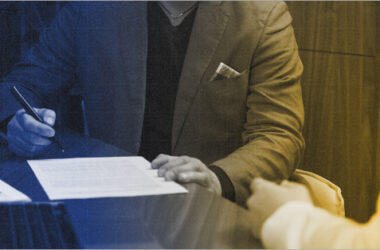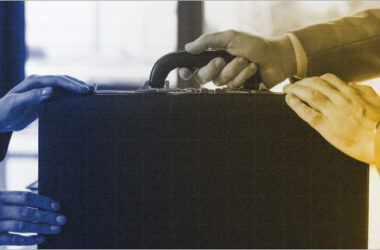Liability insurance is a much-needed safety net. It protects businesses and individuals from potential legal and financial fallout in case something goes wrong. But, what happens if something goes wrong and it results in property damage? Whether you are a business owner, a homeowner or someone simply looking to understand liability insurance better, the concept of property damage in liability insurance can have significant implications. So, let’s dive deep into what property damage is, how it’s covered and why it’s critical to understand its role in liability insurance in India.
What is Liability Insurance?
Before we dive into property damage, let’s get a firm grasp on what liability insurance is all about. At its core, liability insurance covers a policyholder against claims resulting from injuries or damages caused to third parties or their property. Essentially, if you are found legally responsible for causing harm to someone else or their property, liability insurance steps in to cover the costs of that damage.
In India, liability insurance comes in various forms, each suited to different needs:
- Public Liability Insurance: These policies provide coverage for damages caused to third-party property or injuries that occur on your business premises or as a result of your business operations.
- Product Liability Insurance: These policies provide coverage for damages or injuries caused by products that your business manufactures or sells.
- Professional Indemnity Insurance: Protects professionals (doctors, lawyers, etc.) against claims of negligence or errors in the advice they provide.
The role of liability insurance is clear—it acts as a shield, protecting individuals and businesses from potentially devastating legal and financial consequences. Now, let’s focus on one key component of liability insurance: property damage.
Understanding Property Damage in Liability Insurance
When most people think about property damage, they imagine things like a broken window or a dent in a car. However, in the realm of liability insurance, property damage takes on a broader and more formal definition. Property damage refers to the physical harm caused to someone else’s property due to the policyholder’s actions or negligence. It’s important to note that property damage in liability insurance isn’t just about accidental damage. It can also encompass losses due to negligence or errors made by the insured party, leading to harm to someone else’s property.
For example, imagine a scenario where you accidentally spill paint on a neighbour’s car while performing work on your house. If your neighbour decides to file a property damage claim, your liability insurance would cover the costs of repair or replacement of the car, provided it’s covered under the policy.
In contrast, property damage does not cover damage to your own property. For example, if you damage your own vehicle or equipment, that would be covered under your own property insurance, not liability insurance.
Types of Property Damage Covered under Liability Insurance
Liability insurance policies provide coverage for a range of property damage scenarios, which can include:
A. Third-party Property Damage
The most common type of property damage covered under Commercial General Liability (CGL) Insurance is damage caused to third-party property. This means that if your business operations cause damage to someone else’s property, your CGL Insurance Policy will step in to cover the repair or replacement costs.
B. Direct Physical Damage
Direct physical damage refers to tangible harm caused to another person’s property due to your actions. This could be caused by negligence or accidental human error. Damage due to natural disasters (acts of nature), such as floods or earthquakes, is typically excluded under standard liability insurance unless specifically included through endorsements or additional policies.
C. Indirect Damage
In some cases, the consequences of property damage may extend beyond the visible, immediate harm. For example, if a fire spreads from your premises to a neighbour’s building and damages it, the neighbour’s physical property loss would be covered under your liability policy. However, losses like third-party business interruption or consequential loss are generally not covered under standard CGL policies in India unless such extensions are specifically included.
Key Components of a Property Damage Claim
Filing a property damage claim under liability insurance might seem like a straightforward process, but it involves a few essential steps and key elements to ensure the claim is valid. Here’s a breakdown of how a property damage claim typically unfolds:
A. Evidence of Damage
The first step in filing a claim is to document the extent of the damage. It’s essential to gather evidence such as photographs, witness statements and repair estimates. In many cases, your CGL Insurance provider will ask for a detailed report of the incident to evaluate the damage accurately.
B. Liability and Negligence
One of the most crucial elements in a property damage claim is proving liability. To receive compensation, it must be established—either through investigation by the insurer or court ruling—that the damage was caused by your actions or negligence. While you don’t need to conclusively prove negligence when filing the claim, providing evidence that supports your responsibility is important for claim assessment.
C. Costs of Repairs or Replacement
Once liability is established, the next step is assessing the cost of repairs or replacement of the damaged property. The insurer will evaluate these costs and, in some cases, may send a claims adjuster to determine the extent of the damage. Depending on the commercial general liability policy terms, the insurer will either repair the property or provide compensation.
D. Timely Notification and Documentation
It’s crucial to notify your insurer as soon as possible after the damage occurs. Delayed claims could result in the denial of your claim, as insurance companies often have strict timelines for reporting incidents. In addition, documenting the incident thoroughly (dates, times, circumstances) is vital for your protection and the claim’s success.
How Property Damage in Liability Insurance is Calculated
Once a claim is filed, several factors come into play when calculating property damage:
A. Cost of Repairs or Replacement
Commercial General Liability Policy providers will generally look at the cost to repair or replace the damaged property. This involves gathering estimates from repair professionals or assessing the replacement value of the damaged items.
B. Depreciation
If the damaged property has been used for an extended period, the CGL Insurance provider may account for depreciation, reducing the claim amount. For example, if an older piece of equipment is damaged, the insurer may offer compensation based on the current market value rather than the original price.
C. Policy Limits and Deductibles
The policy limit refers to the maximum amount your CGL Insurance will pay out for property damage. It’s essential to understand the limit when purchasing the CGL Insurance Policy to ensure it’s sufficient to cover potential damages. Similarly, the deductible—often referred to as “excess” in Indian insurance terms—is the amount you must bear out of pocket before the insurer processes the remaining claim amount.
Typical Exclusions in Property Damage Coverage
While CGL Insurance covers a wide range of property damage scenarios, it’s crucial to understand what isn’t covered under the policy. Common exclusions include:
A. Wear and Tear
Most liability policies do not cover damage caused by normal wear and tear. If an item naturally deteriorates over time, that won’t be covered.
B. Intentional Damage
If you deliberately cause damage to a property, it will not be covered under the Commercial General Liability Policy. This is considered intentional harm, which most policies exclude.
C. Damage to Your Own Property
As mentioned earlier, liability insurance doesn’t cover damage to your own property. For example, if you accidentally damage your own car, you would need comprehensive car insurance, not liability coverage.
Final Thoughts:
Property damage in liability insurance is a crucial yet often overlooked component of risk management, particularly for businesses in India. By understanding how it works, what’s covered and the claims process, you can protect yourself and your business from significant financial burdens caused by unforeseen events.
Whether you are a business owner or an individual, understanding the property damage coverage and ensuring you have the right liability insurance in place is key to safeguarding your financial future. So, next time you are reviewing your liability insurance policy, make sure you have the proper coverage for property damage. It could save you more than just a headache—it could save your business or home from devastating financial loss.
It’s also important to consult your insurer or broker to understand the precise wording and exclusions in your CGL Policy, as coverage for property damage can vary across insurers in India. Be sure to check if any endorsements or add-ons are needed for your specific risk exposures.








